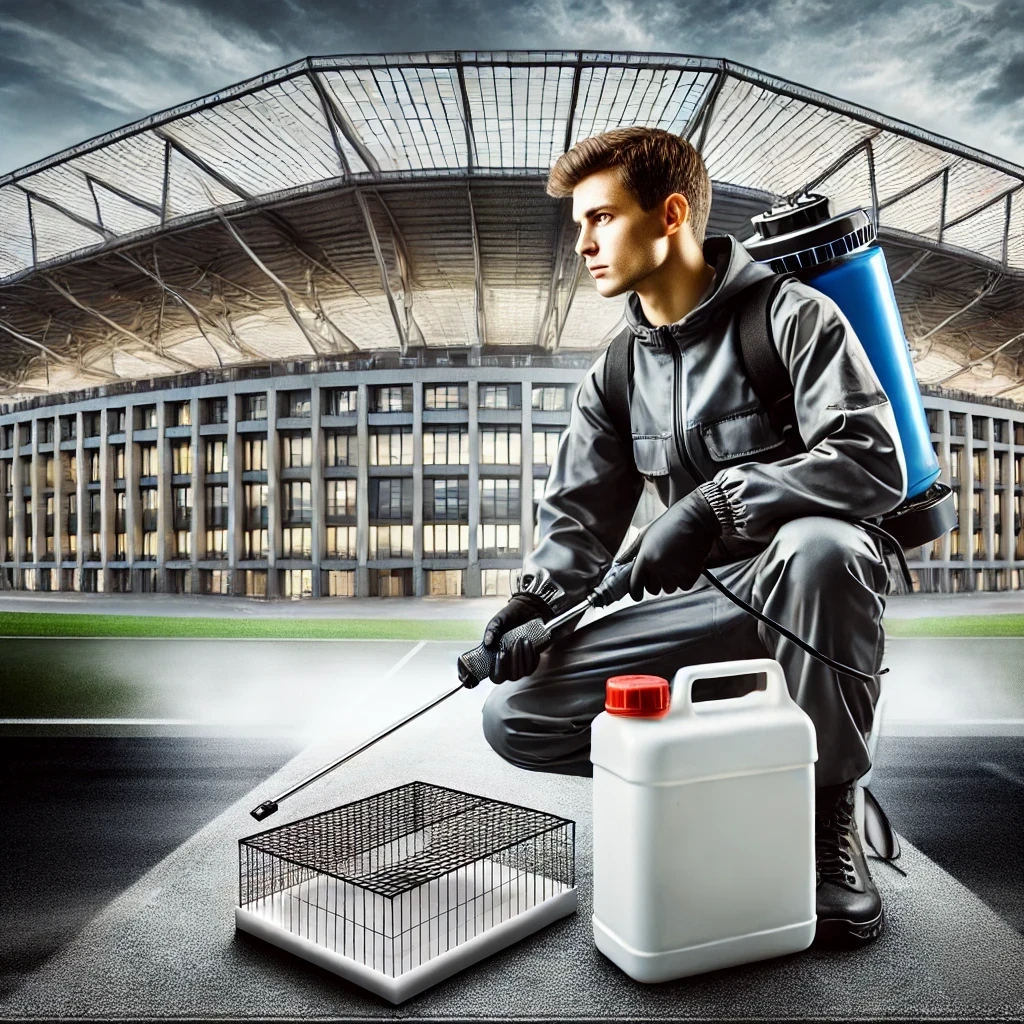
In the context of the start of the Euro Cup and the upcoming Copa América, we found it interesting to explore some sporting events where pest control saved the day, helping control diseases and allowing events to proceed smoothly. Below, we will explore some of the most notable cases.
Rio 2016 Olympics and the Zika Virus
By August 2016, the Rio Olympics were beginning, and as the Rio 2016 Olympics approached, the world was on high alert due to the outbreak of the Zika virus. This virus, transmitted by the Aedes aegypti mosquito, posed serious health risks, including severe birth defects. Athletes, spectators, and even some countries considered withdrawing from the games for fear of contracting the virus. The presence of Zika overshadowed the preparations for the Olympic Games. The health risks associated with the virus were enough to potentially derail one of the world’s most anticipated sporting events.
The solution by the Brazilian government, in coordination with health organizations, was to launch an aggressive pest control campaign that included:
- Extensive Fumigation: Fumigation was carried out in and around all Olympic venues and athlete accommodations.
- Public Education: Campaigns were conducted to educate the public and visitors on preventive measures, such as using mosquito repellents and wearing long sleeves.
- Distribution of Repellents: Repellents were distributed to athletes and visitors to ensure personal protection against mosquito bites.
- Elimination of Standing Water: Efforts were made to eliminate standing water, where mosquitoes breed, in urban areas and Olympic venues.
These measures significantly reduced mosquito populations and reassured participants and spectators, allowing the games to proceed as planned.
Super Bowl XLIX in Arizona and the Rodent Infestation
Before Super Bowl XLIX, held at the University of Phoenix Stadium in Arizona, organizers faced a significant rodent problem. The abundance of food scraps generated during event preparations attracted a large population of rats and mice. A rodent infestation in the stadium posed health risks, potential damage to electrical cables, and an overall unhealthy environment that could tarnish the event’s reputation.
Event organizers, along with pest control professionals, took decisive measures:
- Thorough Inspections: Inspectors identified and addressed all entry points and nesting areas within the stadium.
- Implementation of Rodent Control Treatments: Traps and baits were strategically placed to reduce the rodent population.
- Improved Waste Management: Strict protocols were applied to ensure food scraps were disposed of promptly and properly.
- Continuous Monitoring: Regular inspections were conducted in the days leading up to the event to ensure the rodent problem was under control.
These measures ensured a clean and rodent-free environment, allowing fans to enjoy the Super Bowl without health concerns.
Copa América 2015 in Chile and the Pigeons
During the 2015 Copa América held in Chile, pigeons became a major problem. These birds not only caused damage to stadium structures with their droppings but also posed health risks due to the bacteria and parasites they can carry. The presence of pigeons threatened to mar the experience for fans and players. To address the pigeon problem, organizers implemented several strategies:
- Installation of Nets and Spikes: Bird deterrent systems, including nets and spikes, were installed in stadiums to prevent pigeons from roosting.
- Cleaning Campaigns: Cleaning efforts were intensified to regularly remove droppings and reduce health risks.
- Public Education: Campaigns were launched to discourage fans from feeding the birds, reducing the attraction for pigeons.
These efforts successfully minimized the pigeon population and its impact, ensuring a smoother experience for everyone involved.
London 2012 Olympics and the Seagulls
As London prepared for the 2012 Olympics, the city faced a significant seagull problem. These birds, attracted by the abundance of trash in urban areas, posed a threat to the cleanliness and safety of Olympic venues. The nuisances caused by seagulls included noise, aggressive behavior, and health hazards due to their droppings. This situation required immediate attention to prevent disruptions during the games.
London organizers employed a multifaceted approach to manage the seagull population:
- Improved Waste Management: Enhanced waste disposal systems were implemented to ensure food scraps were well contained and quickly removed.
- Use of Nets and Deterrents: Nets and other physical deterrents were installed to prevent seagulls from accessing key areas.
- Deployment of Birds of Prey: Trained falcons and hawks were used to scare seagulls away from the Olympic Park and venues.
These strategies effectively managed the seagull problem, contributing to the successful execution of the Olympic events.
These examples illustrate how effective pest control measures were crucial in addressing potential health and safety issues, allowing international sporting events to proceed smoothly and safely. Coordination between event organizers and pest control professionals ensured that these large gatherings were not only enjoyable but also safe for all participants and attendees.
